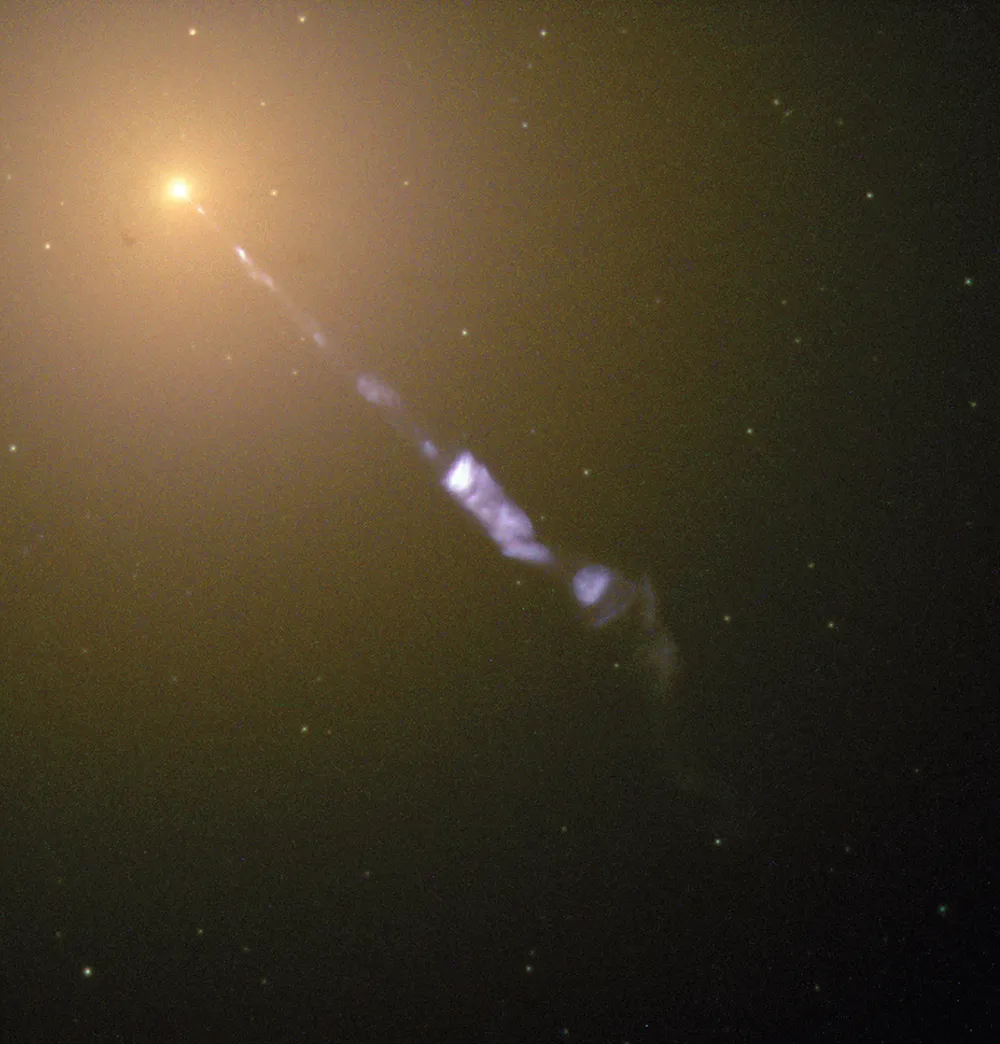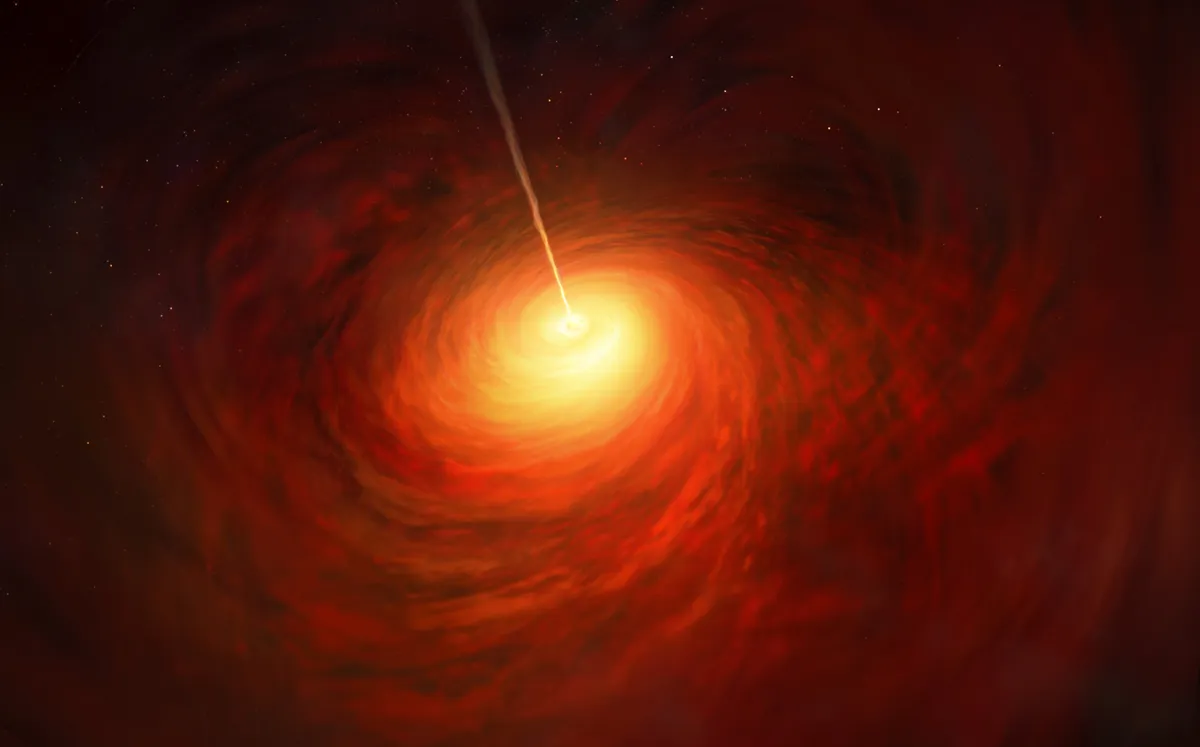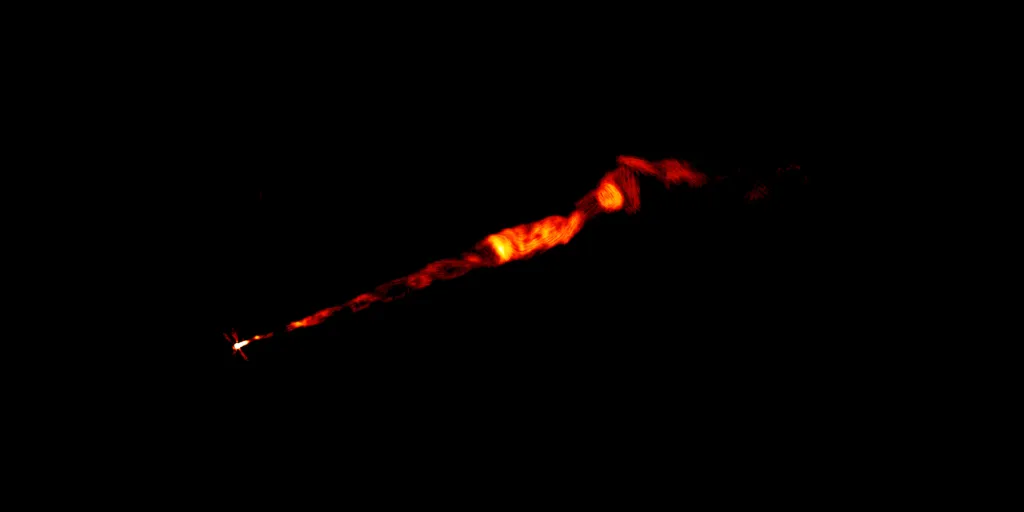The Hubble Space Telescope has observed stars exploding near the trajectory of a 3,000-light-year-long jet of plasma erupting from a supermassive black hole.
The stars, called novae, are not directly hit by the jet from the black hole, which is located at the centre of elliptical galaxy M87, but are close enough that they are torn apart.
What's more, astronomers aren't exactly sure what's going on.
More amazing Webb images
From nebulae and dying stars to amazing spiral galaxies, star-forming regions, deep views of the cosmos and the planets of our Solar System, see the latest and newest James Webb Space Telescope images.

Nova stars explained
'Nova', meaning 'new star' is the name given to stars that suddenly and temporarily brighten in the night sky, giving the impression of a star appearing where there wasn't one before.
Perhaps the most famous nova is the Blaze Star T Coronae Borealis.
In double star systems, novae erupt when an aging, swollen star transfers hydrogen onto a white dwarf companion star.
Hydrogen accumulates on the surface of the white dwarf, it reaches a tipping point and explodes like a hydrogen bomb.
Novae are known to frequently occur in galaxy M87, with one erupting somewhere in the galaxy every day.

And because there are at least 100 billion galaxies throughout the visible Universe, astronomers infer that 1 million novae erupt every second somewhere.
In the case of M87, it seems the black hole jet is enhancing the fuelling process and thereby increasing the rate of nova explosions.
Or perhaps it's producing new nova binaries in its vicinity.
Calculations carried out by the astronomers behind this study ruled out either of these explanations.

The black hole jet nova mystery
"We don't know what's going on, but it's just a very exciting finding," says Alec Lessing of Stanford University, lead author of the paper accepted for publication in The Astrophysical Journal.
"This means there's something missing from our understanding of how black hole jets interact with their surroundings."
Black holes may have a reputation for being invisible cosmic vacuum cleaners, but actually black holes can be some of the brightest objects in the Universe.
They're also known to fire out jets of material into space.

The jet erupting from the centre of galaxy M87 is caused by matter falling in towards the supermassive black hole, which is 6.5 billion times the size of our Sun.
Inevitably, anything caught directly in the path of such a powerful jet erupting from a cosmic behemoth such as this would be destroyed.
But the Hubble Space Telescope study shows that even being close to the jet is just as fatal.
Hubble found twice as many novae going off near the jet as elsewhere in the galaxy.
This implies either that there are twice as many nova-forming double-star systems near the jet, or that such systems erupt twice as often as those elsewhere in the galaxy.

So what's going on?
"There's something that the jet is doing to the star systems that wander into the surrounding neighbourhood. Maybe the jet somehow snowplows hydrogen fuel onto the white dwarfs, causing them to erupt more frequently," says Lessing.
"But it's not clear that it's a physical pushing. It could be the effect of the pressure of the light emanating from the jet.
"When you deliver hydrogen faster, you get eruptions faster. Something might be doubling the mass transfer rate onto the white dwarfs near the jet."
The astronomers also suggested that the jet is heating the white dwarf's companion star, making it transfer more hydrogen onto the dwarf.
But, they say heating by this method would be insufficient to have the observed effect.
It's a cosmic head-scratcher.
"We're not the first people who've said that it looks like there's more activity going on around the M87 jet," says co-investigator Michael Shara of the American Museum of Natural History in New York City.
"But Hubble has shown this enhanced activity with far more examples and statistical significance than we ever had before."

Hubble's historic study of M87
This isn't the first time the Hubble Space Telescope has observed the supermassive black hole at the centre of M87.
In 1990, astronomers used Hubble's Faint Object Camera (FOC) to look at the core of M87 and found bluish "transient events" around the supermassive black that could be evidence for novae.
A nine-month period of Hubble observing time using newer cameras on the space telescope led to this latest study.
Hubble found 94 novae in the one-third of M87 that its camera can encompass.
"The jet was not the only thing that we were looking at — we were looking at the entire inner galaxy," says Shara.
"Once you plotted all known novae on top of M87 you didn't need statistics to convince yourself that there is an excess of novae along the jet.
"This is not rocket science. We made the discovery simply by looking at the images. And while we were really surprised, our statistical analyses of the data confirmed what we clearly saw."
Read the full paper at arxiv.org/abs/2309.16856v2

